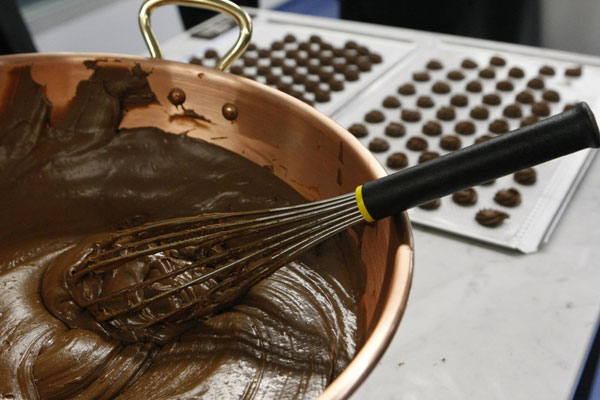America is addicted to chocolate. Foreign chocolate.
A majority of us consume chocolate each day. Although the U.S. produces only 6% of the world’s cocoa, we consume more than 20%.
The threat is obvious. It’s time for government to step in and promote alternatives.
Any day, President Obama will be barnstorming the country to tell us, “If we really want chocolate security and chocolate independence, we’ve got to start looking at how we use less cocoa and use sources that we can renew and that we can control, so we are not subject to the whims of what’s happening in other countries.”
Today, we are at the mercy ofAfrica, which produces over 75% of the world’s cocoa. That’s an unstable source, which means our chocolate dependency undermines national security.
Each of us probably began with that first innocent M&M but now it’s an unsustainable $13-billion a year habit. The average American eats 11 pounds of chocolate per year. We gain weight from chocolate. Pimples get blamed on chocolate.
Fortunately, alternatives exist. With proper federal loans and subsidies these can relieve our cravings and wean us from our addiction to chocolate.
Every member of Congress should be ready to spend on aSpree. (And it’s a lot easier to pronounce than Solyndra.) The economy would be stimulated by the outpouring of government-subsidized alternatives to chocolate.
Subsidizing LifeSavers is another way to demonstrate our commitment to health care.
We can re-affirm our commitment to children if we provide Dots for Tots.
Others would pull for taffy. The ag sector might prefer Jolly Ranchers. Swing states may be indecisive, but Twix would be perfect for them.
And why not switch over our ethanol subsidies to candy corn?
Some chocolate alternatives are no-no’s, however. Promoting Sweet Tarts risks offending the National Organization for Women. And no self-respecting Democrat would mimic Ronald Reagan by providing Jelly Bellies.
President Obama can lead the way by explaining how we should not rely on foreign chocolate anymore than we should rely on foreign oil. Of course, we’ll hope he doesn’t mess up his chocolate numbers as he does when he claims we have “only 2%” of global oil reserves. But he’s using the most restrictive definition possible. Obama’s own Department of Energy reports that, “Proved reserves are a small subset of recoverable resources.”
As noted by Investors Business Daily,America’s actual oil reserves are 60 times higher than the President’s carefully-chosen number: “The figure Obama uses — proved oil reserves — vastly undercounts how much oil theU.S. actually contains. In fact, far from being oil-poor, theUSA is awash in vast quantities — enough to meet all our country’s oil needs for hundreds of years.”
Mr. Obama is using flimsy and misleading numbers to justify his anti-oil and gas energy policy, and his mega-billion dollar subsidies for “green energy” and “green jobs.”
So perhaps it’s time for him to pivot to another basic necessity, like chocolate. If that goes well, he could move on to coffee, because we consume 16% of the world’s coffee but grow less than 1%. And we manufacture less than 1% of the world’s TV sets, yet use 17% of them. Then there’s olive oil: We produce a tenth of one percent but use 8% of the world’s supply. There are plenty of other examples of how we are dependent on trading with other nations, just as they are dependent on trading with us.
But we have an over-abundance of politicians who are addicted to government subsidies and regulation but allergic to free markets. After all, the free market could not have produced the $50 light bulb. It took government to come up with that bright idea.
Former Congressman Ernest Istook is a distinguished fellow at The Heritage Foundation.
Follow Ernest on Twitter: @ErnestIstook





























